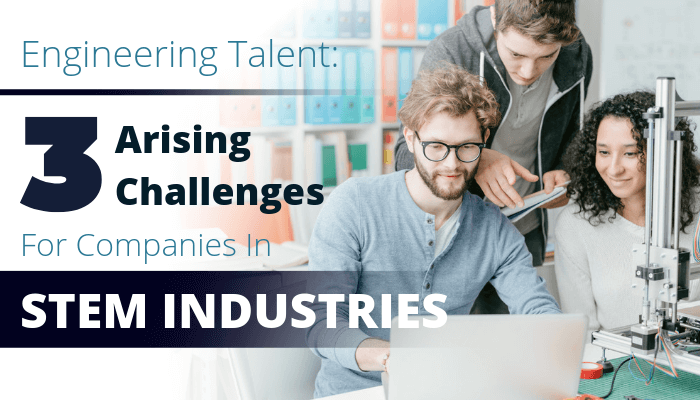
Hiring engineering talent in today’s shallow labor market is challenging for employers. National unemployment is at a 50-year low at 3.8%, and when you drill down into engineering itself, unemployment is a staggering 1.8%.
Unemployment presents obvious hiring challenges for engineering employers. But the question on the minds of many of the hiring managers and executives I work with is: will the hiring challenges of today get worse in the coming years?
A recent National Science Board STEM report presents some interesting insights into what the future may hold for engineering employers by studying STEM education and workforce demographics. Haven’t had a chance to dig through the report? Here are some of the major takeaways I had upon reading it.
Early Education is Lacking
The 2018 report featured a mixed bag of interesting statistics. Some of the stats provide some hope and reassurance for the future of the STEM industries, such as a growth in global patenting and an increase in global economic output. Others, however, were quite alarming. Among the statistics that created cause for concern was that only 16% of American high school seniors are both proficient in math and interested in a STEM career.
In general, proficiency in math and science has been trending downward in the United States over the past few decades. Recent education rankings show that the US is 29th in math and 22nd in science, which further highlights the issue of early education. Children in the United States are simply not receiving the quality of math and science education that they need, which creates issues for the development of future engineers. Why is education down?
Well, that’s a multi-faceted and complex question with plenty of blame to go around. However, the fact remains that today’s students aren’t as prepared for a career in the STEM subjects as the students of the past, which needs to change. With the engineering industry already dealing with the challenges of an aging workforce, this trend could present a serious shortage of engineers in the next five-to-ten years.
Science & Engineering Need More Women
One of the studies within the report was the gender demographic survey of the STEM sectors, taken in 1993 and 2015. Their examination showed signs of gradual improvement but also highlighted how far the industry still needs to come in demographic representation.
Over the 12-year span, there was an 8% increase in the number of women receiving science and engineering degrees and a 7% increase in women receiving the highest degree of education in their field. How did that correlate to the workforce?
In 1993, women represented about 22.5% of the science and engineering workforce, whereas in 2015 they made up 28.4%. As you can see, there’s still a very significant gap. The study explored the topic further by revealing a granular view of the various sectors that comprise science and engineering. The results were as follows:
- Biological, agricultural, and environmental life scientists: 47.9%
- Computer and mathematical scientists: 26.4%
- Physical scientists: 27.8%
- Social scientists: 59.8%
- Engineers: 14.5%
Aging Workforce is a Significant Issue
As I touched on a bit earlier, there are concerns about the industry’s aging workforce. With retirement rates spiking, talent shortages have been observed across all sectors of engineering. Looking at the STEM report’s findings, there’s a significant correlation.
In 1993, the workers aged 51-75 years-old made up 19.9% if the workforce within science and engineering. In 2015, that number climbed to 33.4%, more than double the 15.6% of workers under the age of 30.
The cause of this is relatively straightforward. The disproportionately-sized Baby Boomer generation has hit retirement age, and fewer college grads are entering the engineering field. With such a significant age disparity in the STEM fields, employers need to prepare for an uncertain future by increasing their recruiting, hiring, and retention efforts.
How I can Help
If you need help hiring engineering talent, you’ll want to partner with a recruiting professional who knows the unique challenges your company is facing. With over 10 years of engineering and manufacturing operations recruiting experience, I’ve been able to help employers solve many of the challenges that you’re dealing with.
From hiring a dynamic leader for a director-level role to fueling your talent funnel with an up-and-coming project engineer, I can deliver recruiting results that will exceed your expectations.
Contact me today and fill me in on the hiring challenges you’re facing.
Are you in need of top talent?
Find the Best Talent with Laura Shoults
[maxbutton id=”65″ text=”Contact Laura Today”]

